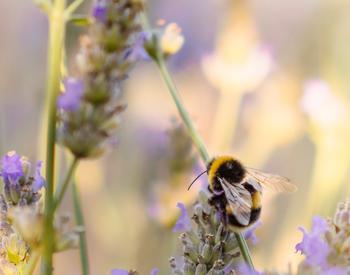Buckwheat family — Polygonaceae
Desert buckwheat, Eriogonum species
Eriogonum (commonly called buckwheat) are attractive, long-lived perennials with variably colored, ball-shaped flower clusters. They have an extended blooming period from late spring through early summer.
These low-growing plants, with branched woody stems and hairy basal leaves, are found extensively throughout sagebrush-steppe ecosystems. They provide nectar and pollen for bees and other pollinators, as well as seeds for songbirds and rodents.
The Oregon Bee Atlas melittologists have documented many genera and species of indigenous bees visiting buckwheat throughout the state. Eriogonom flowers are also a great place to spot cleptoparasitic cuckoo bees such as Stelis, Dioxys, Nomada, and Xeromelecta.



















